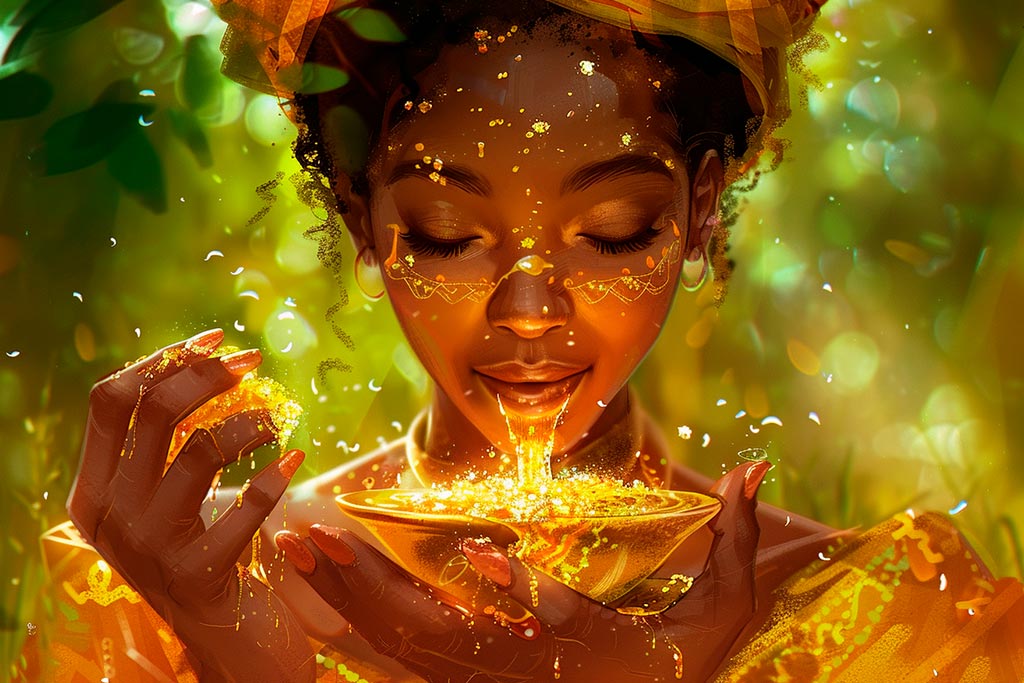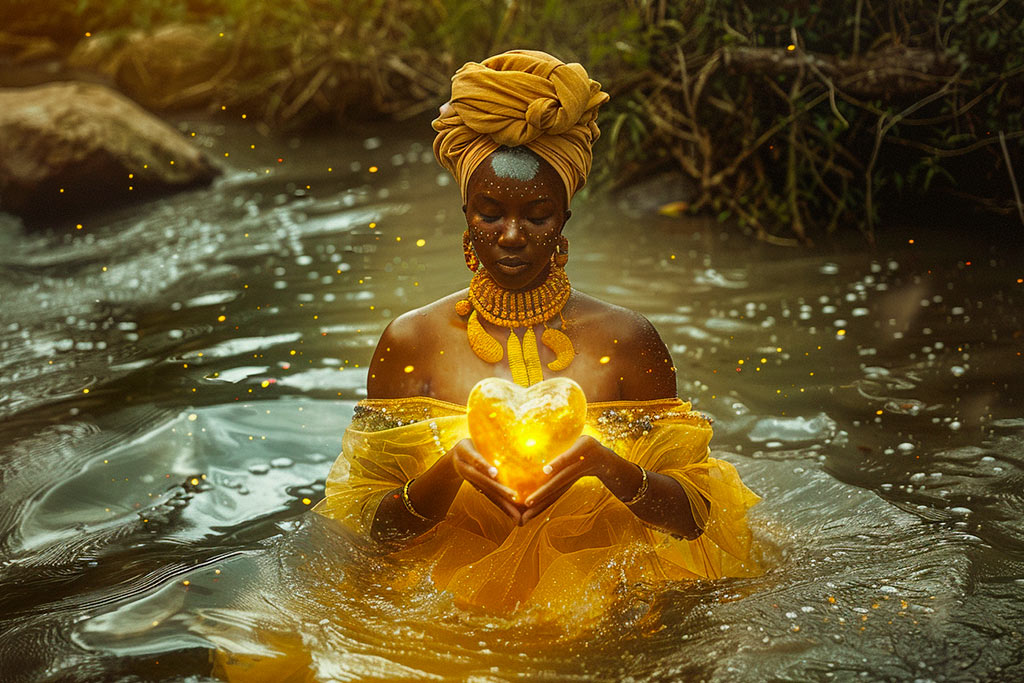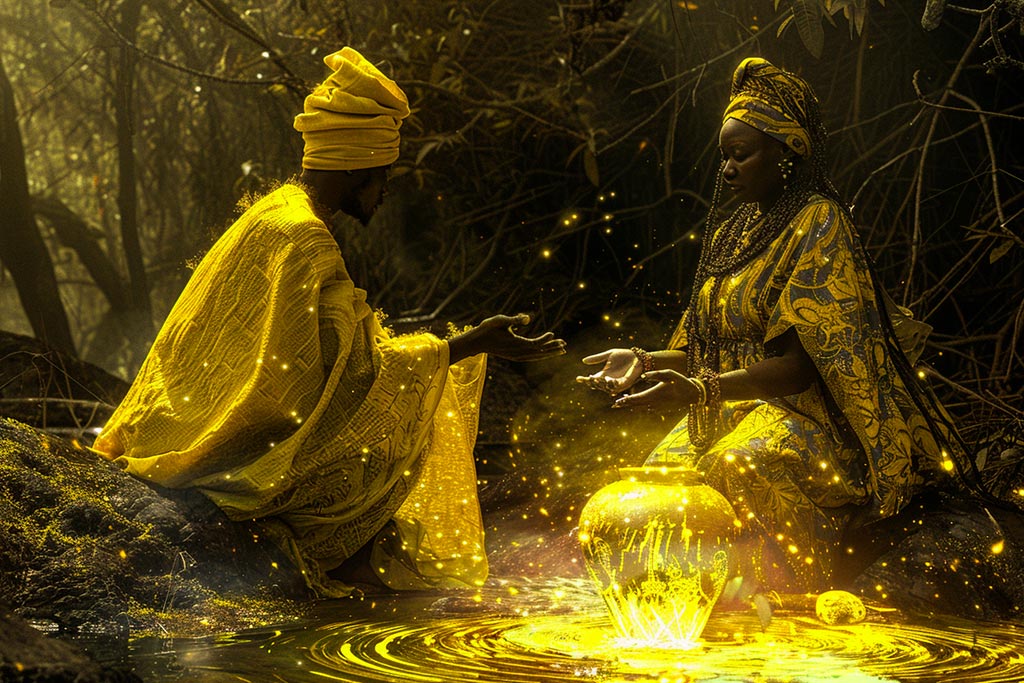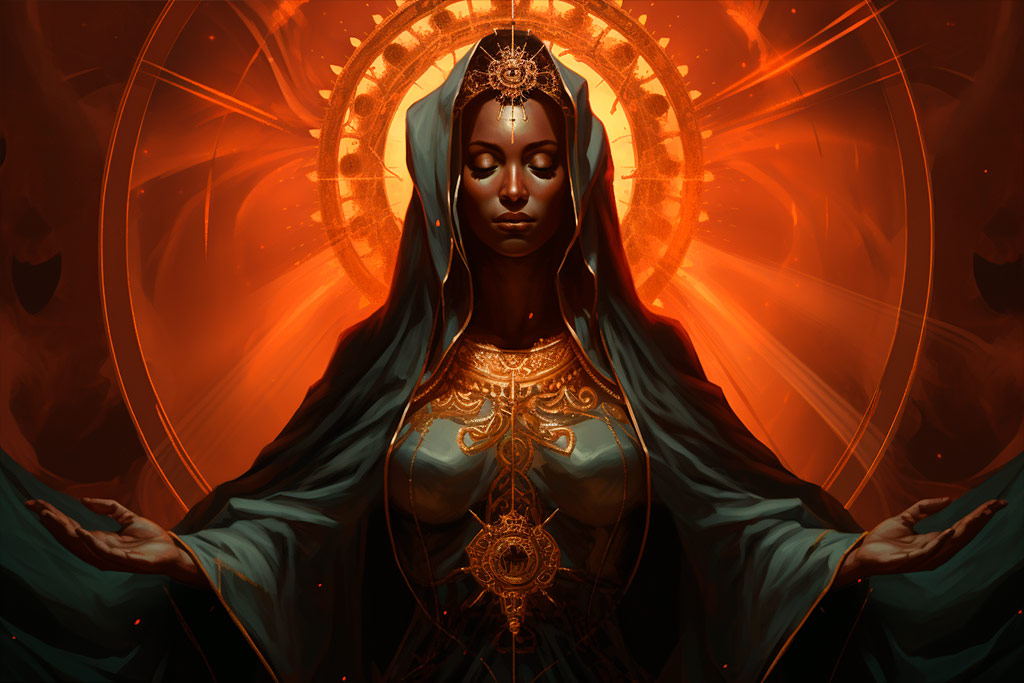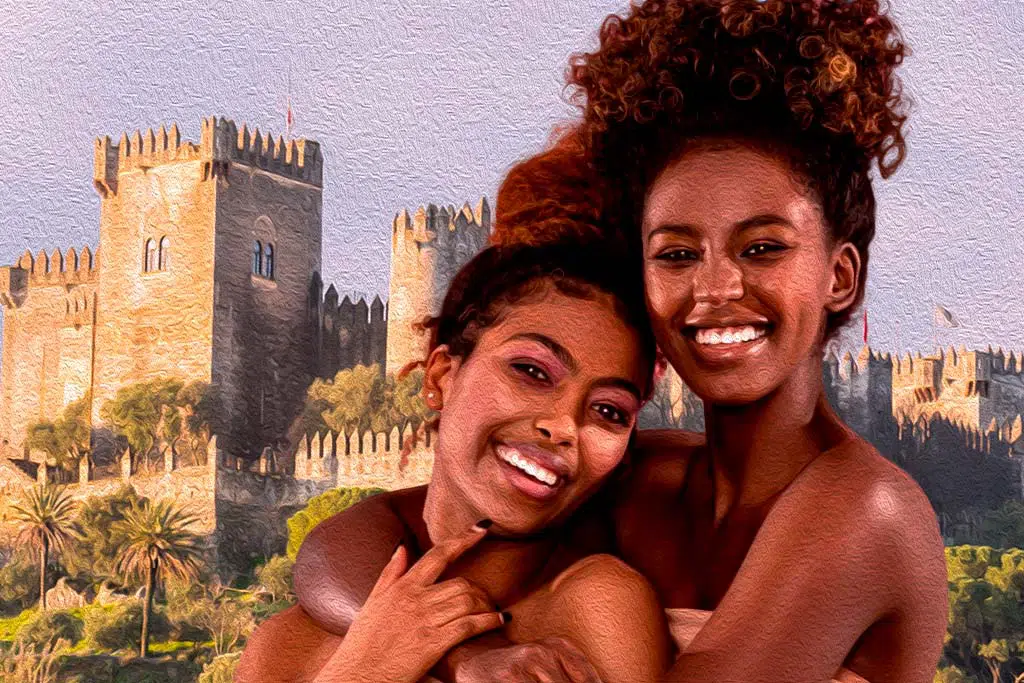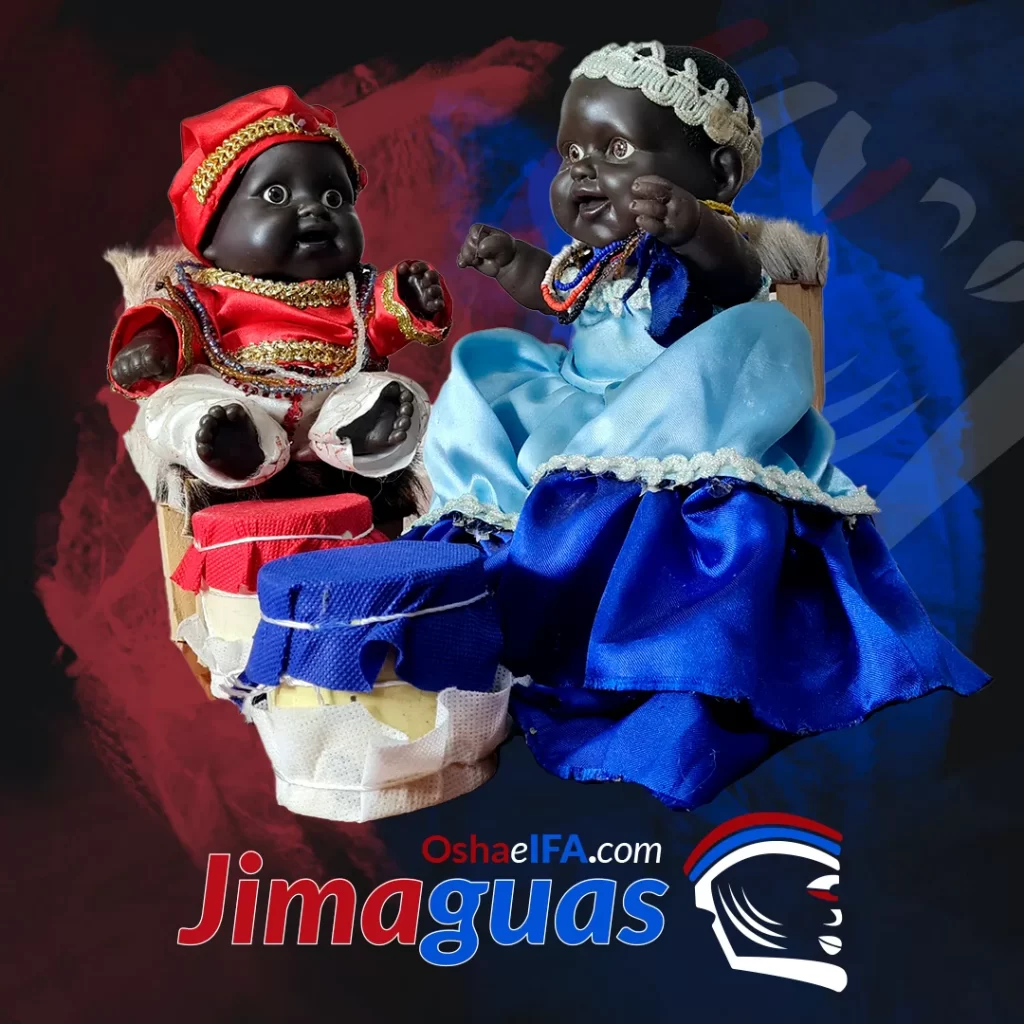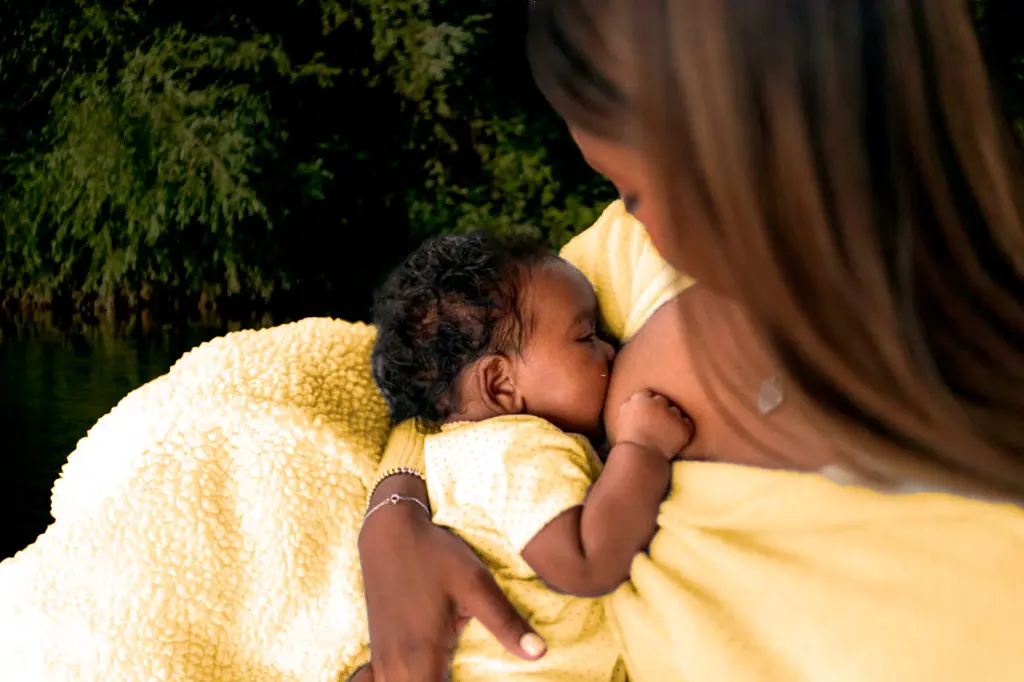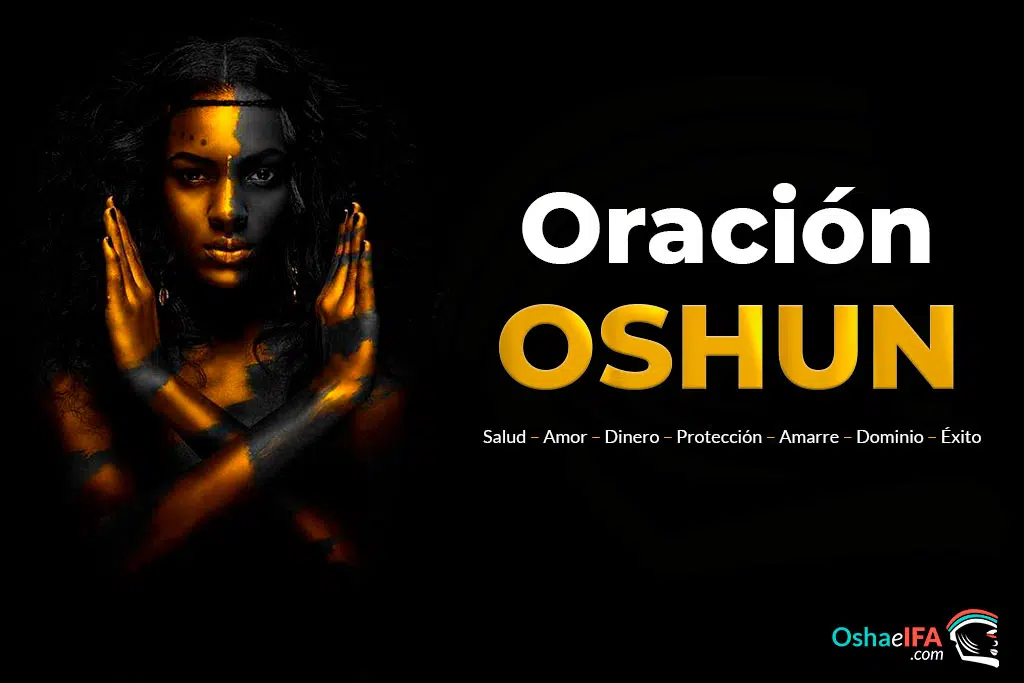Paths of Oshun: The different Manifestations of the River Goddess
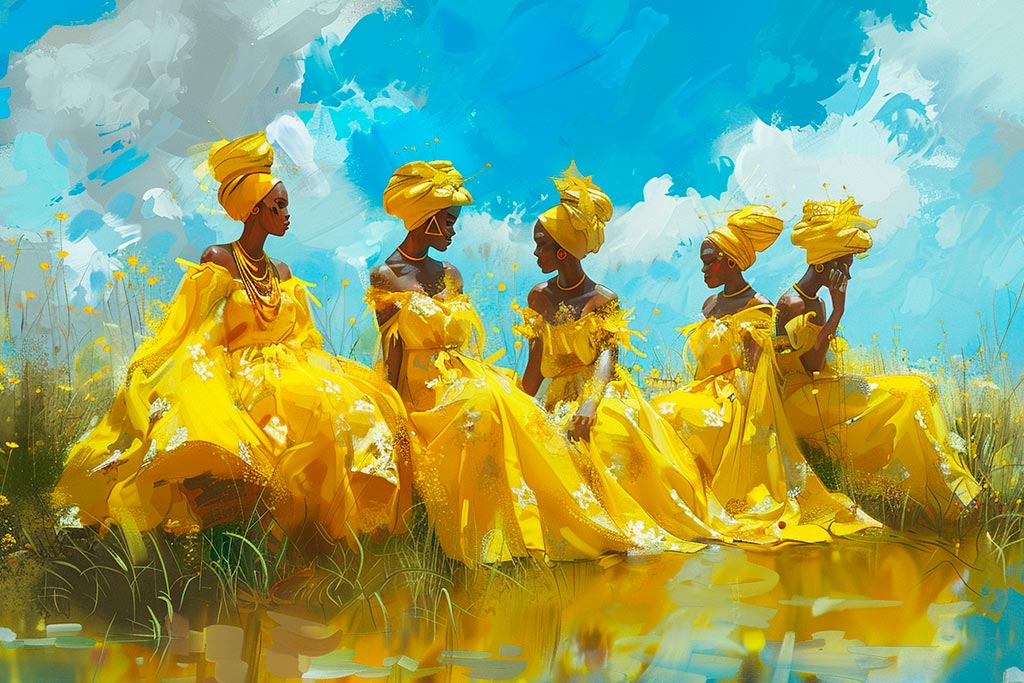
The paths or avatars of Oshun They are a reference to the various manifestations of this Orisha in African lands, where each town acquired its own way of representing and naming it. At the same time, it is also estimated that these representations are evidence of different earthly experiences sustained by the energy of this Orisha. In all of them we find common features that characterize them. In this regard, Shangó Omo Asa (2021), in his book Orisha's power, Maintains that:
«We must remember that she, regardless of her path, is a benevolent mother (Oore Yeyé), loving, cheerful and even flirtatious with her style of dancing and walking, she is a powerful and ancestral queen, but she is also of a warrior temperament, strong in her decisions…” (p. 47).
Each path has attributes, tools, preferences and taboos that help the initiate understand the best way to care for and entertain this Orisha. Among the paths that Oshun lived during his travels on earth we have:
- Oshun Ibu Kolé: Guardian of homes, associated with the vulture, sorceress who works with the occult.
- Oshun Ibú Akuaro: Young and pure, expert in love spells, linked to the meeting of the river and the sea.
- Ochún Ibu Aña: Owner of the drums, communicator through sound, deaf to external voices.
- oshun ibu : Warrior mounted on horseback, invincible in battle, revolutionary and demanding.
- Oshun Ibu Yumu: Master of the snake, reclusive weaver of destiny, cautious in her attention.
- Oshun Ibu Segan: Wife of Oshoosi, celestial archer, symbol of precision and focus.
- Ochún Ibu Oddonki: Muddy and fertile, guardian of growth and regeneration.
- Ochun Ibu Ede: Protector of shrimp, lover of exploration and discovery.
- Ochún Ibu Oggale: Keeper of keys, strong character, surrounded by order and discipline.
- Oshun Ibu Iddoi: Sorceress of the dry riverbed, mediator between dryness and abundance.
- Oshun Ibu Tinibu: Night leader of the community, closely linked to Orisha Orun.
- Oshun Ibu Inani: Famous in disputes, bearer of mirrors and fans, celebration of vanity.
- Ochún Ibu Okuanda: Resurrected from the river, liberator of Shango, recipient of sweet sacrifices.
- Oshun Ibu Latie Elegba: Pumpkin eater, central presence in the river, crownless but powerful.
- Oshun Ibu Addesa: Bearer of the secure crown, owner of the peacock, splendor and majesty.
- Oshun Ibu Eyede: Royalty incarnate, lover of colors and ornaments, reign of beauty.
- Ochun Ibu Okuase Oddo: Emerged dead but vital, custodian of diverse waters, collector of memories.
- Oshun Ibu Bumi: Seeker of water, link with nature, cultivator of life and growth.
- Ochún Ibu Iloke Oñi (Oyin): Strong and combative, adorned with honey, guardian of sweetness and defense.
- Oshun Ibu Itumu: Warrior on an ostrich, defiant of norms, fierce protector of her domains.
- Ochún Ibu Aja Jura: Warrior of the lagoon, helmet and axes as signs of battle, aquatic defender.
- Oshun Ibu Aremu Kondiano: Mysterious in whiteness, ally of Orunmila, teacher of divine secrets.
- Oshun Ibu Ceni: Inhabitant of shadowy waters, conductor of occult rituals, weaver of magic.
- Oshun Ibu Aneyemi: Blind but visionary, companion of divinities, bearer of ancestral wisdom.
- Ochun Ibu Inale: Riding on riches, lover of sand and sun, mistress of abundance.
- Ochún Ibu Fonda: Always on guard, sword in hand, call to action and combat.
- Oshun Ibu Odoko: Divine farmer, close to Orishaoko, creator of crops and life cycles.
- Oshun Ibu Agandara: Sitting on her throne of wisdom, with tools of power and sustenance.
- Oshun Ibu Idere Lekun: Guardian of the sea caves, echo of the waves against the reefs, watcher of hidden secrets.
- Ochun Ibu Awayemi: Lady of the nostrils, emissary of aromas and breaths, conductor of breathing and life.
Each path illustrates a unique aspect of Oshun, revealing his complexity and depth as a deity of love, fertility, and sweet waters, and highlighting his integral role in the lives of his children.
You can read: What are the Children of Oshun like?
Exploring the Paths of Oshun and their meaning
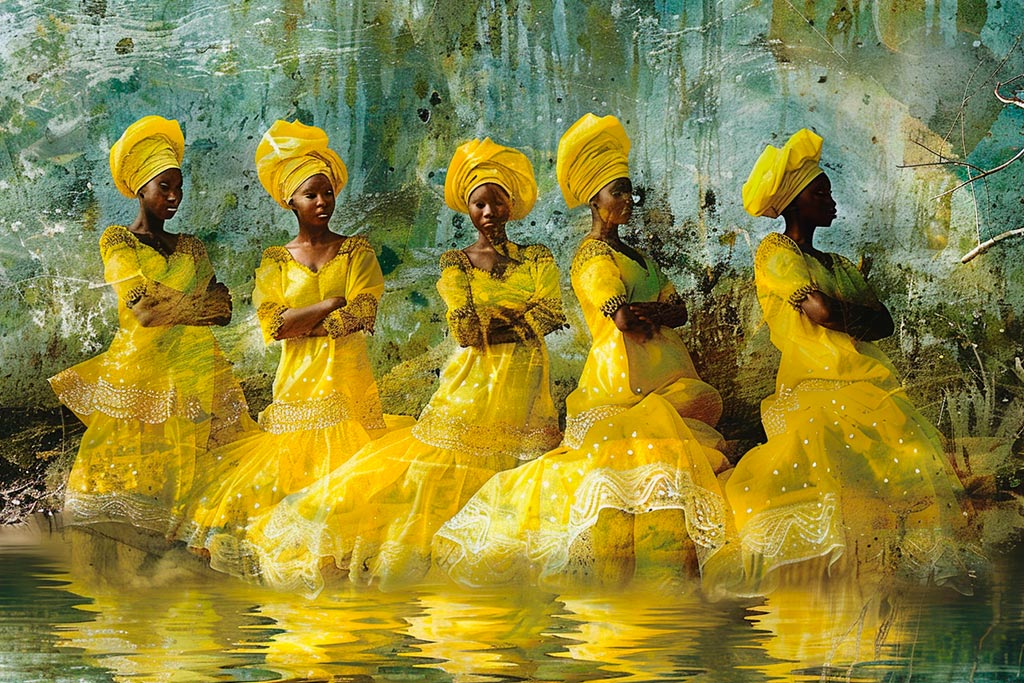
The Yoruba deity Oshun manifests through multiple paths, each representing different aspects of life, nature, and spirituality. Below, the paths of Oshun are detailed, delving into the unique characteristics and teachings that each of them offers.
Oshun Ibu Kolé
Oshun Ibú Kolé, known as the owner of the tiñosa, plays a unique role among the paths of Oshun. Described as a sorceress with a penchant for the dark arts, her presence is imposing in the realm of spiritual protection and surveillance. "She who stings, collects dust and takes care of the house", as her name indicates, this facet of Oshun focuses on purification and the elimination of the negative, using an Ozain inshe with zamuro feathers, symbolizing its connection with death and transition. Although she refuses to work for benevolent ends, her role is crucial in maintaining balance, acting as a guardian against harmful influences.
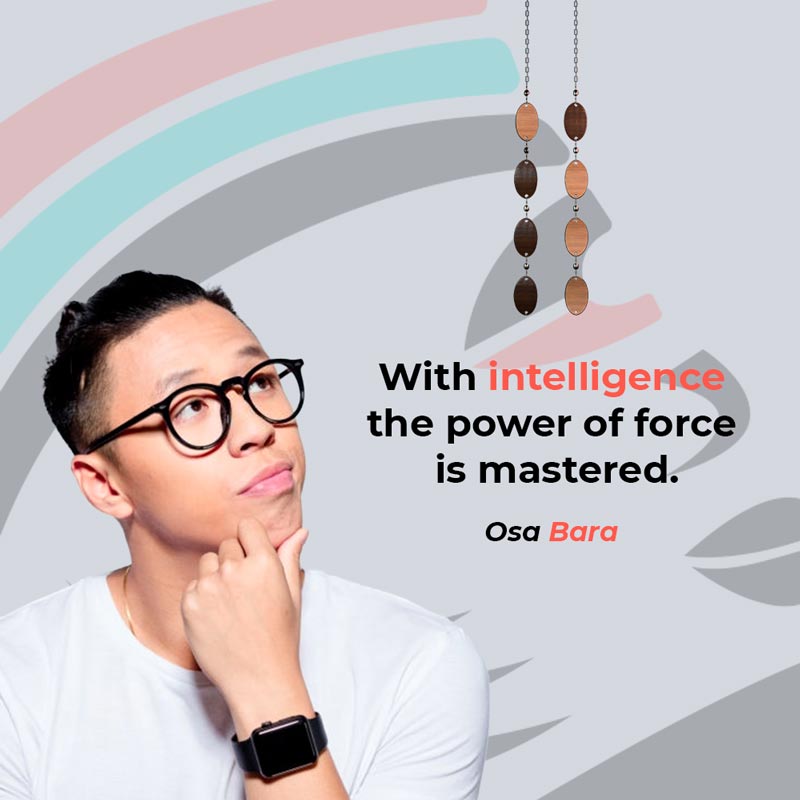
The oshinshin he accepts, composed of elements such as eggs and shrimp, reinforce his connection to aquatic life and fertility, while the chard leaves directly on his Otanes emphasize his connection to the earth and nature. Her use of an ornate fan and weaving tools reflects the complexity of his character, who, despite his inclination toward the somber, possesses a deep connection to the creative and sustaining aspects of life. Born in the Odu of Ifa Ogbe Tuanilara and known in the Arará land as "Abalu", Ibú Kolé represents the duality of destruction and protection, reminding us of the importance of spiritual cleansing and vigilance in our environment.
Oshun Ibu Akuaro:
She is a young Oshun. She does not do witchcraft or any type of damage. She is the owner of the quail. She is an expert in love affairs. When she rides her saint's horse she makes a gesture with her hands by placing a finger in her ear and passing it over her head, this means that she is a queen, but she does not have a crown. It is believed that her secret name is: Igan Idan. She lives where the river and the sea mix, and she can eat with Yemaya. She tells herself that she is deaf. She uses a woven mesh over her tureen that is decorated with quail feathers. She, too, carries a staff that is decorated with chicken and quail feathers. She is born in the Odu of Ifa Ojuani Melli. In the Arará land she is called Nasso.
«Oshún Akuara or Ibú: lives between the sea and the river, ‹this is that of salt and fresh water›. She is also a good dancer and has a happy character; She is a worker, she likes to do good, she cares for the sick... »
(Cabrera, Lydia. Yemayá and Ochún. Kariocha, Iyalorichas and Olorichas. 1980, p.70).
You can read: Powerful Prayer to Oshun for Love
Oshun Ibu Aña:
She is the owner of the drums. She is completely deaf, she must be called with 5 bells at the same time so that she can hear her devotees. They have a crown with a ring that is made to the size of the initiate's head, from which come 3 batá drums, 3 güiritos, 2 adanes, 2 oars, 10 bracelets, and 5 hooks. All elements are made of gold metal. She is born in Odu of Ifa Otrupon Ogbe. In the Arará land, this Oshun road is called Nawedito.
Oshun Ibu Ololodi:
This avatar of Oshun is a warrior who rides a horse. When she goes into battle she dresses like men and uses a sword. Her enemies can never defeat her. She has a revolutionary character. She hurts with all types of metals, especially with the machete. She is Orumila's wife and her apetebi. She is a very demanding mother, when she gets upset with her children her punishments can be very dangerous. You have to put a lot of iron on it to reinforce it. When she wants to be on the mat or the floor she cannot get up until she tells her to. The Oshinshin offered to this Oshun is prepared with eggs, shrimp, bitter broom and lettuce. She does not like to live in yellow tureens, the foundation of her lives in a jar with a white bottom decorated with green and pink. She is very prosperous, she considers herself a business owner. She is born in the Odu of Ifá: Ogbe Roso. In the Arará land they call him Atiti.
«Oshun Ololoridi: On this path, Oshun is a fighter and defender of the revolution. "She welcomes the change that is born from struggles."
(Silva, Mari. 2021, p. 65).
Oshun Ibu Yumu:
It is known as "the one that makes women's bellies grow without being pregnant." He has the power to tame snakes. She lives at the bottom of the river knitting sitting in her rocking chair, where she entertains herself listening to the sounds of her instruments. She doesn't like to be bothered unnecessarily. «However, under this avatar it is not easy to attract her attention, she will do it when she considers it prudent» (Shangó Omo Asa. 2021, p.47). She calls herself with a copper cowbell. She is said to be physically extremely beautiful. She is the Oshun who is truly deaf. Among her attributes she has: five bugles, five silk scarves, five machetes, a white horse and a large bronze axe. She likes to have lots of kolah nuts placed around her tureen. Her favorite dish is sliced okra that is presented to her in a gourd and she lets herself be carried by the current of the river. In the Arará land she is known as Tokosi.
Oshun Ibu Segan
Oshun Ibu Segan, consort of Oshoosi, personifies precision and focus. Armed with a bow and arrow, she symbolizes skill in hunting and skill in lovemaking. This path reflects the balance between gentleness and cunning, guiding devotees toward their goals with precision. Ibu Segan teaches the importance of intention and patience in the pursuit of goals, emphasizing the strength that lies in gentleness and determination.
Ochún Ibu Oddonki
Known as the river that grows in the mud, it symbolizes fertility and renewal. He lives on a pylon, this reflects the solid foundation on which life and nature rest. Carrier of a sewing basket, pestle, moon, adams and saber, Oddonki is a master of transformation and alchemy, turning the mundane into magic. Her connection to the serpent and the moon highlights her mastery over the intuitive and the changeable. In Arará, she is venerated as Tokago, highlighting her role as guardian of ancient secrets and deep wisdom.
Ibu Ede
Ibu Ede, the guardian of the shrimp, symbolizes exploration and discovery. Her crown, adorned with 101 bronze pieces and bracelets, reflects the richness and complexity of life. This Oshun invites adventure and knowledge through nature, reminding us of the importance of curiosity and movement in our personal growth.
Ochún Ibu Oggale
Known as the housekeeper, Ibu Oggale is the guardian of order and discipline. Her strong character and preference for being surrounded by tiles suggest a deep connection to home and protection. The tools on her crown, which include a pickaxe and a rake, symbolize preparation and hard work. Ibu Oggale teaches about personal space management and the importance of keeping our environment in harmony.
Ibu Iddoi
Ibu Iddoi, the dry riverbed, represents transformation and renewal. Living on a pylon and surrounded by water and sunflowers, she symbolizes hope and the possibility of flourishing in the midst of aridity. Her tools, which include a sewing basket and an axe, speak to her ability to create and modify her environment. As a witch sorceress, Ibu Iddoi is a master in the art of changing circumstances in her favor, teaching the importance of adaptability and resilience.
Oshun Ibu Tinibu
Oshun Ibu Tinibu, leader of the Iyalordes society, embodies authority and mystery. His preference for the night and his river boat rides underscore his intimate connection with the waters and the moon, the source of his magic and charm. The presence of red carnations and perfumes in his worship highlights his sensuality and his mastery over love and attraction. The prohibition of dogs among his devotees suggests a sacred space of tranquility and purity. Ibu Tinibu, closely associated with Orisha Orun, teaches us about the balance between the spiritual and earthly worlds, guiding her followers towards the hidden wisdom and beauty of the night.
"On this path of Oshun he is a communal leader and only manifests himself at night." (Silva, Mari. 2021, p. 66).
Ibu Inani
Ibu Inani, known for her ability to excel in disputes, chooses sand as her bed, symbolizing adaptability and constant change. Her bronze fan with bells and collection of objects such as mirrors and gourds reinforce her connection to vanity and self-knowledge. Bearer of solar and lunar symbols, Inani represents the balance between opposing forces, guiding her followers through confrontation toward resolution and fame.
Okuanda
Okuanda, “she who was thrown dead into the river,” symbolizes resurrection and liberation, marked by her heroic act of freeing Shango. Her affinity for honey and husks reflects her sweet yet powerful nature. The variety of weapons on her crown show her willingness to fight and protect, celebrating her resilience and her ability to transform adversity into victory.
Oshun Ibu Latie Elegba
Oshun Ibu Latie Elegba, revered for its simplicity and direct connection with nature, finds its home in the heart of the river, where life flows with strength and purity. The gourd on which she feeds symbolizes fertility, prosperity and protection, central aspects of her being. The absence of a crown highlights its accessibility and its intimate connection with all aspects of life, far from earthly distinctions. Among her attributes are: 5 bronze oshes and 15 arrows. In the Arará land she is called Kotunga.
Ibu Addesa
Ibu Addesa, known as “she who holds the crown securely,” symbolizes pride and authority with her affinity for the peacock. Her receptacle and crown, adorned with peacock feathers and golden metal, highlight her beauty and power. The oars and saber hanging from her personalized hoop signal her ability to navigate life and defend her domain. In Arará, called Aboloto, she embodies spiritual leadership and protection.
Oshun Ibu Eyede
Ibu Eyede, recognized as "she who is Queen", stands out for her crown wrapped in yellow fabrics and adorned with exotic feathers, reflecting her majesty. Her personalized ring, with mirrors and jewels, symbolizes her vanity and power. Yiaa, her name in Arará, embodies royal splendor and influence.
Ochun Ibu Okuase Oddo
Known as "she who emerged dead from the river", she symbolizes resurrection and purification. Her foundation on a secret charged pylon and surrounded by the waters of various rivers reflects her deep connection with aquatic life and the cycle of life. Totokusi, her name in Arará, evokes her mysterious emergence and rebirth.
Oshun Ibu Bumi
Ibu Bumi, "she who seeks water from the river", links her essence to primordial need and purity. The clay jar and snails loaded with it invoke fertility and spiritual connection. She prefers ornaments of coral and amber, and her taste for chicken and pheasant signals her affinity with nature and wildlife.
Ochún Ibu Iloke Oñi (Oyin)
Ibu Iloke Oñi, also known as Oyin, exudes strength and determination. Her preference for honey, symbolizing sweetness and attraction, contrasts with her warrior spirit, armed with staff, scimitar, and shield. Without a crown, her power lies in her authenticity and connection to nature, as evidenced by her bond with paradise grass.
Ibu Itumu
Ibu Itumu emerges as a fierce warrior, riding an ostrich and defying social conventions, reflecting her free and bold spirit. Her masculine attire and her enjoyment of corojo butter and liquor symbolize her rejection of norms and her complete autonomy. In Arará, known as Jueyague, she represents courage and feminine power without limits.
Ochún Ibu Aja Jura
As a brave warrior of the lagoon waters, Ibu Aja Jura personifies protective strength and strategy. Armed with a helmet, double-bladed ax and scimitars, her presence commands respect and security. The absence of a crown emphasizes her inherent power and her direct connection to the elements, highlighting her role as a fearless defender and invincible warrior.
Aremu Kondiano
Aremu Kondiano is distinguished by her purity and spiritual connection, dressed entirely in white and closely linked to Orunmila. This path of Oshun, marked by her participation in the ritual act with Orunmila, reflects wisdom and sacrifice. Her use of her board, ekuele, and irofa, and the ornamentation of her crown with ivory and cowrie shells, underscore her spiritual depth and her role as a mediator between the divine and the earthly. Tefande, as she is known in Arará, symbolizes her elevated and mystical status.
Oshun Ibu Ceni
Oshun Ibu Ceni inhabits the hidden and mysterious dark wells on the banks of rivers, places of power and renewal. This path is characterized by its intimate connection with nature and the mysteries that it holds. His inshes of Ozain mark his mastery over the occult and the esoteric, marking his presence as a protective and healing force. In Arará, known as Ajuanyinu, Ibu Ceni invites introspection and the discovery of kept secrets.
Oshun Ibu Aneyemi
Ibu Aneyemi, blind, represents inner vision and intuition beyond the physical. Her closeness to Asojuano and Orunmila emphasizes her importance in healing and divine wisdom. Through her bronze staffs, scimitar, and horse, along with clay jars, she symbolizes spiritual guidance and protection. Aneyemi teaches us that true perception transcends the physical senses, embracing a deeper and more ancestral knowledge, as suggested by her voice in the Odu of Ifa Oyekun Melli.
Ochun Ibu Inale
Ochun Ibu Inale symbolizes abundance and prosperity, being particularly attracted to money and material comfort. Her preference for residing on the beach suggests a connection to the tranquility and vastness of the sea, while her yamao staff highlights her spiritual and natural authority. The aye snails and lodestone in her environment reinforce her ability to attract wealth and maintain harmony.
Ochún Ibu Fonda
As a tireless warrior, Ochún Ibu Fonda is always ready for battle, emphasizing her protective and combative role. Her sword and Ozain's inshe mounted on a doll underscore her ability to defend herself and protect her followers. The gourd with kumquat peels and sandalwood powder along with her taste for roasted yam symbolize her connection with the earth and the importance of her preparation and purification. Zenjuen, her name in Arará, resonates with her unbreakable spirit and her willingness to face any challenge.
Oshun Ibu Odoko
Ibu Odoko, with her strong personality, stands out for her close relationship with Orishaoko and her skill as a farmer, symbolizing fertility and sustenance. Her residence in a jar on a loaded pylon reflects her solid foundation and her deep connection to the land. The cucuyo stick figure represents her bond with all the saints, showing her universality and her role as a spiritual and physical nurturer. Her origin in the Odu of Ifa Ogbe Kana marks her presence as a vital and regenerative force in the world.
Oshun Ibu Agandara
Ibu Agandara is distinguished by his regal seat on a chair, symbolizing his elevated status and dominion over welfare and justice. Her arsenal, including the scimitar and bronze dove, speaks of her ability to cut negative ties and bring peace, while the padlock ensures the protection and safekeeping of her followers. The crown with African parrot feathers reinforces her connection with sacred communication and divination, underscoring her innate wisdom and her birth in the Odu Ifa Ika Di.
Oshun Ibu Idere Lekun
On this path, Ibu Idere Lekun is the guardian of the mysteries hidden in the deep sea and caves, a place of powerful secrets and ancient truths. Her reed drum symbolizes the call to the deep, to the essential, and her use of scimitar and mask suggests a fierce protection of those mysteries, as well as the complexity of her beauty and power. This path, absent of a crown, highlights its authenticity and primordial power, revealed in the Odu of Ifa Otura Sa.
Ochun Ibu Awayemi
Ibu Awayemi, recognized as the owner of the nostrils, symbolizes the essence of life and breathing, the constant flow of vital energy. Her tools, including adams and axe, along with crowns adorned with snails, speak of her ability to open paths and protect her devotees. This manifestation of Oshun emphasizes the importance of intuition and sensory perception in understanding the world and connecting with the divine.
"On this path of Oshun she speaks through Odu Oyekun Meli, she is blind and walks with five bronze canes and a horse." (Silva, Mari. 2021, p. 66).
You can read: What are Shango's children like?
References
- Cabrera, Lydia. (1974). Yemayá and Ochún (Kariocha, Iyalorichas and Olorichas). Universal Editions.
- De Sousa Hernandez, Adrian. (2005). The Orishas in Africa. An approach to our identity. Editorial of Social Sciences.
- Gutierrez, Mariela A. (2004). Lydia Cabrera and hers Yemayá y Ochún, an incomparable fluvial compendium of Afro-Cuban mythology. Inti: Hispanic Literature Magazine: No. 59, Article 19.
- Ifa Orilana Aworeni Odumola Sowunmi. (2009). The nature of the Orisas. Rosebud Editions.
- Morgaine Raven. (2021). Orisha, Goddess, and Queen of the Sea. Weiser Books.
- Ócha'ni Lele. (2012). Sacrificial Ceremonies of Santería: A Complete Guide to the Rituals and Practices. Destiny Books Publisher.
- Shango Omo Asa. (2021). Orisha's power. Independent publication.
- Silva, Marie. (2021). Orishas: The Definitive Guide to the African Orisha Deities and Their Presence in Yoruba, Santeria, Voodoo, and Hoodoo, with an Explanation of Dilogun Divination.
